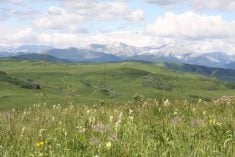Ottawa should lead a campaign to attract young farmers to agriculture by developing and promoting a youth-focused national vision for the industry, says a 4-H leader.
Canadian 4-H Council chief executive officer Mike Nowosad told MPs on the House of Commons agriculture committee that young people are looking for a strong, positive vision for their future.
“It would be a good idea to develop a new, crisp, clear vision for Canadian agriculture focused on young people,” he said.
Read Also

Gene editing digs deeper space in Canadian plant breeding
More Canadian research into crop variety development is incorporating gene editing, and one researcher notes that Canada’s regulatory approach to gene editing will help drive innovation
“Young people want, they need and they respond to a vision they can buy into and something they believe can deliver the probability of a positive future. I think the greatest thing that the government of Canada could do is develop this vision and share it so youth could get behind it and grow with it.”
He said Agriculture Canada also has to update the way it communicates with young people about opportunities in the industry.
“If you go to fall fairs these days and you look at any government of Canada display booth, it’s stationary,” he said. “Kids aren’t going to stop there and take a look. You’ve got to communicate on Twitter and Facebook.”
Ashley Knapton, a 4-H member from Almonte, Ont., had another suggestion from her parents.
“Mom said that they didn’t want free money,” she said. “They want sustainability in the industry. They want to be able to make money.”
And long-term low interest loans would make it easier to handle their entry debt, she said.
Six years ago in their late 30s, her parents spent almost $400,000 to buy quota for 12 kilograms of milk per day.
They have since purchased enough quota for 16.5 kgs. “We’d like to expand to 20 but unfortunately, due to our current quota loans, we are unable,” she told MPs. Quota in Ontario costs $32,000 per kg, roughly the production from one cow.
Now in their mid-40s, they both work at full-time off-farm jobs to try to pay off the quota debt. It took them 10 years of planning and investing in the farm before they were ready to buy quota.
Nowosad said the 98-year-old 4-H movement is feeling the effects of fewer young farmers.
“Currently, 4-H is facing similar problems with agriculture in that rather than facing an acute shortage of young farmers, we’re facing an acute loss of 4-H members,” he told MPs.














